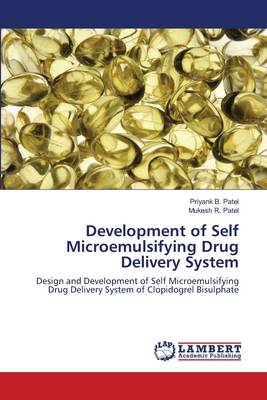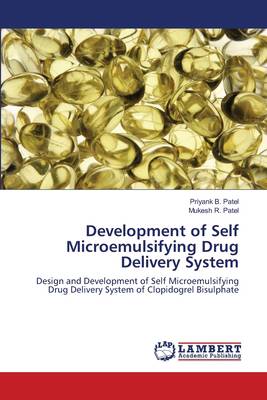
- Afhalen na 1 uur in een winkel met voorraad
- Gratis thuislevering in België vanaf € 30
- Ruim aanbod met 7 miljoen producten
- Afhalen na 1 uur in een winkel met voorraad
- Gratis thuislevering in België vanaf € 30
- Ruim aanbod met 7 miljoen producten
Zoeken
Development of Self Microemulsifying Drug Delivery System
Design and Development of Self Microemulsifying Drug Delivery System of Clopidogrel Bisulphate
Priyank B Patel, Mukesh R Patel
Paperback | Engels
€ 49,45
+ 98 punten
Omschrijving
Nearly 40% of new drug candidates exhibit low solubility in water, which leads to poor oral bioavailability, high intra- and inter-subject variability and lack of dose proportionality. Modification of the physicochemical properties, such as salt formation and particle size reduction of the compound may be one approach to improve the dissolution rate. . In recent years, much attention has focused on lipid based formulations to improve the oral bioavailability of poorly water soluble drug compounds. In fact, the most popular approach is the incorporation of the drug compound into inert lipid vehicles such as oils, surfactant dispersions, self-emulsifying formulations, emulsions and liposomes with particular emphasis on self microemulsifying drug delivery systems (SMEDDS).
Specificaties
Betrokkenen
- Auteur(s):
- Uitgeverij:
Inhoud
- Aantal bladzijden:
- 108
- Taal:
- Engels
Eigenschappen
- Productcode (EAN):
- 9783659404795
- Verschijningsdatum:
- 1/06/2013
- Uitvoering:
- Paperback
- Formaat:
- Trade paperback (VS)
- Afmetingen:
- 152 mm x 229 mm
- Gewicht:
- 167 g

Alleen bij Standaard Boekhandel
+ 98 punten op je klantenkaart van Standaard Boekhandel
Beoordelingen
We publiceren alleen reviews die voldoen aan de voorwaarden voor reviews. Bekijk onze voorwaarden voor reviews.











